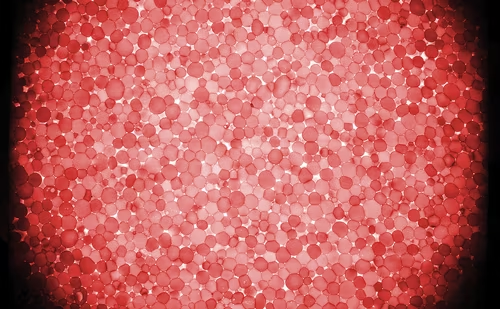Obtaining a Diagnosis of the Patient with Possible Polycystic Ovary Syndrome
Whenever attempting to diagnose PCOS, it is important to define the population at high risk for having the syndrome. Women with unwanted hair growth7,8 or menstrual disturbances9,10 are highly likely to have PCOS.11,12
Obtaining a Diagnosis of the Patient with Possible Polycystic Ovary Syndrome
Whenever attempting to diagnose PCOS, it is important to define the population at high risk for having the syndrome. Women with unwanted hair growth7,8 or menstrual disturbances9,10 are highly likely to have PCOS.11,12
Women with a family history of PCOS should be considered as well. Most importantly, the performance of a thorough history and physical examination in the evaluation of the patient with possible PCOS is critical in arriving at the diagnosis. The four features of the syndrome that should be evaluated include hirsutism, hyperandrogenemia, ovulatory dysfunction, and polycystic ovarian morphology. These findings comprise the cornerstones of the diagnosis, again regardless of the criteria used.
Hirsutism and Polycystic Ovary Syndrome
Hirsutism is the most visible and troubling clinical feature of PCOS. Whereas facial and body hair can be worrisome to patients, only excess terminal hair in a male-type pattern signals androgen excess. Hirsutism most often affects the face, chin, and an area below the umbilicus, which is an extension of pubic hair growth. The modified Ferriman-Gallwey (mFG) score13 is the most common method of determining the presence of hirsutism. A visual score is assessed based on the method originally reported by Ferriman and Gallwey.14 Nine body areas are assigned a score of 0–4 based on the density of terminal hairs. A score of 0 represented the absence of terminal hairs and a score of 4 represented extensive terminalhair growth. Using this approach, cut-off values for defining hirsutism have been reported to be scores of 6–8 or greater.5,15,16 Additionally, the prevalence of hirsutism in PCOS can vary according to race and ethnicity. Overall, hirsutism is an important feature of PCOS, affecting approximately 65–75% of non-Asian patients with PCOS.
Hyperandrogenemia and Polycystic Ovary Syndrome
Hyperandrogenemia is a critical component of the PCOS diagnosis. It is defined as supranormal levels of circulating endogenous androgens. The most frequent androgen measured is testosterone (T): total, unbound, or free. Serum T circulates bound to sex-hormone-binding globulin (SHGB), and only the unbound or free T acts on target tissues. Clinicians must be mindful of the limitations and pitfalls inherent in the measurement of T, specifically the highly variable and inaccurate direct assays for total and free T.17–19 Measurement of total and free T should be performed by a highquality assay. In addition to an accurate methodology, it is critical that each individual laboratory establish its own set of normal ranges established in well characterized, healthy control women. Overall, in patients diagnosed by the 1990 National Institutes of Health (NIH) criteria, approximately 70% of PCOS patients demonstrate elevated free-T levels. The value of additional measurements of androstenedione and dihydrotestosterone sulfate (DHEAS) is less clear, but measuring these androgens may identify an additional 10–20% of patients as hyperandrogenemic.19 Finally, it is important to note that measurements of circulating androgens, including free T, should be used only as part of the diagnosis of PCOS and not as the sole criterion. Androgen measures are most useful in diagnosing hyperandrogenism in patients without overt or obvious signs of hyperandrogenism, such as adolescents, patients of Asian extraction, or other women without gross evidence of hirsutism. Ovulatory and Menstrual Function and Polycystic Ovary Syndrome
Generally, the menstrual dysfunction of PCOS is characterized by irregular, infrequent, or absent menstrual bleeding. Specifically, 60–85% of patients with PCOS and oligo-ovulation demonstrate overt menstrual dysfunction, primarily oligo-amenorrhea;5,6,20 the remainder present with apparent eumenorrhea, although ~5% may demonstrate polymenorrhea (cycles <26 days in length). A thorough history check should reveal that menstrual irregularities often begin at menarche. In a large series of patients diagnosed with PCOS, 65–100% have clinically evident menstrual dysfunction.5,6 Such data clearly indicate that the presence of regular episodes of vaginal bleeding is not always indicative of ovulatory cycles, particularly in the face of other signs of hyperandrogenism (e.g. hirsutism).21,22 Patients who present with clinical evidence of hyperandrogenism but apparent eumenorrhea should have their ovulatory function evaluated further, primarily by measuring a progesterone (P4) level on days 20–24 of the cycle; values greater than 3 or 4ng/ml generally constitute evidence of ovulation.
Polycystic Ovaries in Polycystic Ovary Syndrome
Approximately 70–100% of women with PCOS will demonstrate polycystic ovarian morphology on ultrasonography, depending on the criteria used.24 It is important to note that the diagnosis of polycystic ovaries by ultrasound requires the use of strict guidelines. Most commonly used today are criteria that indicate that polycystic ovaries can be diagnosed when at least one ovary demonstrates the presence of 12 or more follicles measuring 2–9mm in diameter in each ovary, and/or increased ovarian volume (>10ml).25 More recently, the importance of ovarian volume over the number of follicles in determining PCOS has been noted.26 While the addition of ultrasound imaging of the ovaries can help in making the diagnosis, it has not necessarily had an impact on the treatment of the syndrome.
Exclusion of Other Disorders of Androgen Excess or Ovulation
All current definitions of PCOS require that other disorders of androgen excess or ovulatory function be excluded. Principally, the former includes 21-hydroxylase-deficient non-classic congenital adrenal hyperplasia (NCAH), Cushing’s syndrome, androgen-secreting neoplasms (ASNs), and drug-induced or iatrogenic hyperandrogenism (IH): the latter includes thyroid dysfunction and hyperprolactinemia. NCAH is excluded by the measurement of a follicular phase (pre-ovulatory) basal 17ahydroxyprogesterone (17-HP) level, which if >2–4ng/ml mandates an acute adrenocorticotropic hormone (ACTH) stimulation test.27 Alternatively, evaluation for Cushing’s syndrome, ASNs, or IH should be instituted if the history and physical exam suggests their possibility. Thyroid dysfunction and hyperprolactinemia can be excluded by the routine measurement of thyroid-stimulating hormone (TSH) and prolactin levels, although the prevalence of these disorders in women with overt hyperandrogenism is relatively low.21,22 Overall, patients being evaluated for PCOS should, at a minimum, have NCAH excluded by a basal 17-HP level, and possibly thyroid dysfunction and hyperprolactinemia, by TSH and prolactin levels.
Evaluation for Associated Disorders
It is important to recognize that PCOS is associated with an increased risk of insulin resistance, impaired glucose tolerance (IGT), and type 2 diabetes mellitus (DM). There is also the additional risk of dyslipidemia and cardio- vascular disease, a risk that appears to be worsened by concomitant obesity. All PCOS patients, regardless of weight, should be evaluated for metabolic dysfunction. At a minimum this should consist of a fasting glucose level. However, as most patients with PCOS have good pancreatic â-cell function, although possibly deficient for their degree of insulin resistance, determining the glucose response to a two-hour 75g oral glucose challenge test (oGTT) is optimum for detecting IGT or DM in these women.28 Impaired glucose tolerance is diagnosed by a fasting glucose <140mg/dl and a two-hour glucose level between 140 and 199mg/dl; type 2 DM is diagnosed if the two-hour glucose during the oGTT is >200mg/dl.29 In addition, determination of insulin levels during this test may assist in gauging the degree of hyperinsulinemia. A peak insulin level of >300mIU/ml indicates severe hyperinsulinemia, 150–300mIU/ml moderate hyperinsulinemia and 80 or 100–150 mIU/ml suggests mild hyperinsulinemia. Finally, while no current recommendations exist, the high prevalence of dyslipidemia30 and metabolic syndrome31–33 in this disorder suggests that most if not all PCOS patients would benefit from an evaluation of their lipid profile.
Conclusions
The evaluation of the patient suspected of having PCOS must consist of a thorough history and physical determining, among other features, the degree of hirsutism as assessed by the mFG score. This should be followed by a targeted laboratory assessment, which should include, at a minimum, the measurement of a basal 17-HP level in the follicular phase of the cycle to exclude NCAH and possibly TSH and prolactin to exclude thyroid dysfunction and hyperprolactinemia. Androgen levels (total and free T, and DHEAS measured using high-quality assays) should be obtained, as these have the most relevance in patients without overt clinical signs of hyperandrogenism (i.e. without hirsutism). Ovarian morphology determined by transvaginal ultrasound should be assessed when possible. In patients with PCOS, a metabolic assessment is mandated. This should include measuring glucose and insulin levels during a two-hour 75gram oGTT, and a lipid profile. Overall, the screening and evaluation of patients with possible PCOS is highly costeffective and represents only 2% of the economic burden of this disorder.34 PCOS results in serious, long-term morbidities that are associated with a significant impact on quality of life and economic costs. As more and more women are diagnosed with this disorder, it is imperative that research and public awareness continue to increase in order to best treat these patients.







